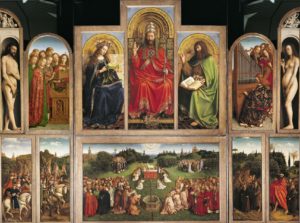The topic I chose for the final project is about the role of women in the ancient world. I decided to choose this topic because I want to explore and learn how different civilizations have portrayed women in art.
Tag: final project topic
Final Project Option #1- The Evolution of Realism in Art History
Juan Jose Hernandez
Art 1010
Prof. Gwendolyn Shaw
December 11th, 2018
Final Project- The Evolution of Realism in Art History
In art history, artists have developed and evolved over time, always bringing new styles of art. Although art can be interpreted and defined in many ways, in this case art is the way artist express themselves and apply certain skills in painting or sculpting in other to create a work of art. However, the way art is made has evolved over time as new artists have incorporated their innovative ideas into their work. One new movement of art is the incorporation of realism in art projects. Realism was developed by Gustave Courbet (1819-1877) who was a famous artist recognized and criticized for challenging the way painting had been made. He suggested that “‘painting is and essentially concrete art and can only consist in the representation of real and existing things’” (Finocchio, Ross, 2004) This means that the old method of exaggerating dimensions of the human body and making those look unnatural did not make art realistic. In art history realism has influenced the way art is perceived by people evolving to a more natural and realistic art rather than exaggerated dimensions and unnatural work of art.
Over time art has influenced the culture of many civilisations and usually artist paint or do sculptures in other to represent a period, or event or simply to express and idea. The way art was made in the 1400s was different from modern art.
Below is a painting of The Dead Christ, by Andrea Mantegna c.1480-
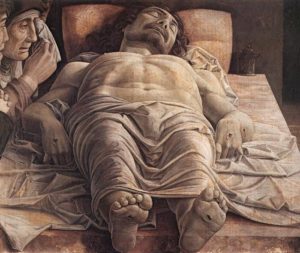
In the image above is illustrated Jesus Christ laying in a bed after he has been crucified on the cross. The wounds and wholes of his hands and feet are visible which and the portion of Jesus body is pulled down by gravity because all his muscles are stretched and loose. The rib-cage are also very stretched, however the body as a whole is very large and it seems unnatural. The feet are the first body part upfront and they look very small compared to the whole body of Jesus. Furthermore, the face of Virgin Mary and John illustrate agony as they mourn over the death of Jesus Christ. Virgin Mary is drying her tears but the proportions of her hands do not match how far her fingers can reach towards her eye because she has it covered. Although it seems as if it was very large. One more thing to be aware of is that the hands of John are very small as he holds them together into prayer. This painting is unrealistic and unnatural, although the event is very religious and accurate, Jesus is painted to be larger than Virgin Mary and John.
In the 1500s painting was being introduced with better and more realistic dimensions but artists were not quite there yet.
Below is an image of Plato, Aristotle and other ancient philosophers and mathematicians depicted in Raphael’s School of Athens painted by fresco in 1509-1511-

In this painting the period of the renaissance is being represented by the accommodation of various philosophers throughout the painting. In the 1500s there was a rebirth in the interest for Roman and Greek culture because humans were thought to be the center of the universe during the introduction of Humanism during the Renaissance. The concept is represented by the many philosophers and great thinkers coming together having papers (from the very first printing press invented by gutenberg) and showing exchange of ideas through conversations and thinking postures. However the painting is unnatural because was impossible for all ancient philosophers and mathematicians to come together before an artist to paint them. The thing to notice however is that landscape was being added to the methods of doing art. There is depth in the structure because the artist included clouds that can be seen through the windows. Furthermore, there is also a mirror’s reflection of the structure seen from the point of view of the men painted. Realism is intended here but not achieved.
Realism was finally introduced in the late 1840s after the French revolution, where the french population wanted democracy and later on artists drew their focus on everyday-life of men and woman of the working class. Here art became more realistic and natural. Natural things that everyday people do such as harvesting, or brushing hair, or having lunch at the park are some examples.
Below is a painting of The Gleaners (1857) by Jean Francois-Millet-

In the image above, three women are collecting the leftovers of the harvest, it required “hours of hunched-over labor would often be rewarded with a small amount of meal” (TheArtStory.org). This form of work was the lowest in the french society for peasant women. But he image is not altered. The artist saw a scene and decided to paint it. The body dimensions of the women are accurate and the landscape is also natural. The horse is well painted to a small size which makes it look far away. The colors of the painting make it look as late afternoon. Furthermore the trees and cattle are also well represented.
In all three images, changing from time to time, the artists have incorporated events in history in general. Artists began to focus on everyday life and working class people which gave art a natural aspect. The incorporation of realism is very important in art today. Art is defined in many ways by many individuals, but in order to express a natural event then realism must be used. Art might continue to evolve, and it should be exiting.
Outline/Background
Final Project Choice #1- Write a Paper Assignment (750-1000 Words)
Topic: The evolution of realistic art. (1400s – 1800s)
Over history in art, realism has influenced the way art is done. The addition of more natural methods into art has made it more life-like and it helps the viewer to be more amazed and engaged.
Thesis: In art history realism has influenced the way art is perceived by people evolving to a more natural and realistic art rather than exaggerated dimensions and unnatural work of art.
Below is the different works of art I will be using for this Final Project:
The Dead Christ, by Andrea Mantegna c.1480

Plato, Aristotle and other ancient philosophers and mathematicians depicted in Raphael’s School of Athens, fresco, 1509-1511

Hendrik Cornelisz Vroom, The Return to Amsterdam of the Second Expedition to the East Indies, 1599

A Burial at Ornans (1849-50) by Gustave Courbet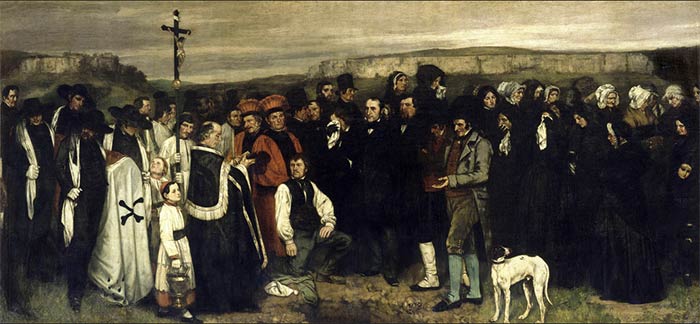
Final Project Topic & Annotated Bibliography
Topic: the importance of faces and symbols within the artworks devoted to the civil rights movement
https://www.brooklynmuseum.org/exhibitions/soul_of_a_nation
Soul of a Nation at the Brooklyn Museum focuses on 20 years of post-civil rights movement art depicting various leaders in the artworks.
https://www.moma.org/explore/inside_out/2016/07/09/how-do-black-lives-matter-in-momas-collection/
MoMa’s gallery consists of the injustices committed against blacks in the civil rights movement, before and after.
https://www.metmuseum.org/art/collection/search/676458
“Let My People Go” shows the continuous struggle for black Americans expressed in the Harlem Renaissance, tied into the symbolism of slavery and the Biblical story of Egyptian captivity of the Hebrews.
Article 1: https://www.huffingtonpost.com/2014/02/12/civil-rights-art_n_4769268.html
This article displays many of the artists contributing their art to the cause of civil rights during the Civil Rights Movements. It is a showcase for the different artists and forms of art that took part in this movement.
Article 2: https://www.smithsonianmag.com/arts-culture/the-power-of-imagery-in-advancing-civil-rights-72983041/
This article focuses on the importance that images have in shaping self perception and unification of a movement. It describes how important civil rights artists’ roles were in their movement.
Final Project Outline
Topic: The Significance and Differences of Female and Male Nude Sculptures
Thesis: When examining sculptures throughout various eras of art, it is evident that many are are nude. The nude is a significant part of art and it’s implications are just as significant. However, it appears that more often than not, there are more male nude figures than the female figures, which poses the question of why this is. Further exploration of nude sculptures from the time periods prove that there are in fact many differences between the nude sculptures of men and women.
The artworks are related to my topic because they can all be used to compare the similarities and differences in the design of the statues based on gender.
(All the art I will be using is from The MET)
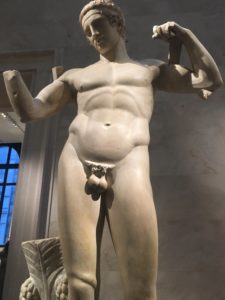


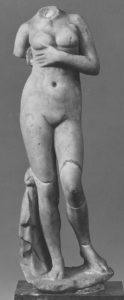
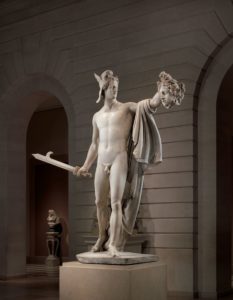
Final Outline of Project
In my final project, I will be discussing the highlights of Renaissance and Baroque art and also discussing the similarities and differences between the two artistic styles. I picked this topic because both of these styles are very unique and display a vast amount of fine details. In addition to talking about the different art styles, I will also discuss the differences architectural styles because their differences also parallel to those between artworks. In my project, I will be utilizing the following 5 artworks:
Thesis Statement: Both Renaissance and Baroque paintings pay attention to fine details, expression, scenery, color, and theme. Although both styles share a vast amount of similarities, there are also differences between both styles. Baroque art in 1500-1600 Europe focuses on dramatic expressions, non-idealism, dynamism, and physical movement. Renaissance paintings resemble serenity, stillness, calmness, and are idealized.
- The Lamentation
Domenichino (1603)


2. Departure of the Amazons
Claude Déruet
1620s
Metropolitan Museum of Art
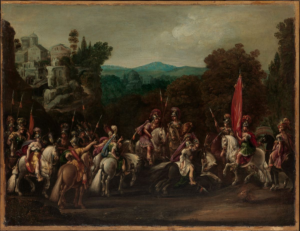
3. Merry Company on a Terrace
Jan Steen
1670
Metropolitan Museum of Art

4. Everhard Jabach
Charles Le Brun
1660
Metropolitan Museum of Art
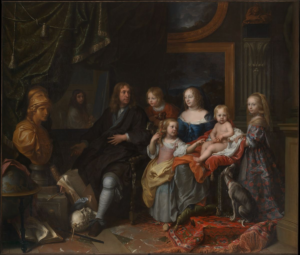
5. Boy with a Greyhound
Paulo Veronese
1570s
Metropolitan Museum of Art
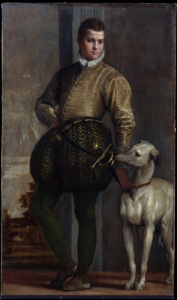
outline / topic / background
For my final project I want to talk about the different kinds of sculpture in China, Japan and Korea. Which kinds of sculpture stood out to me and why was is it important and what special material is it made out off.
Thesis statement: By looking at these sculptures you can already tell the similarities and difference between them. However, different country sculpture has its own unique and style that makes us what to focus on. I can say China and Korea has a similar design sculpture but may not be made from the same material. Also, consider why these sculptures is important and its meaningful.
CHINA
artist: Augusta Bromberger
title: seated Bodhisattva
date: late 13th–early 14th century
museum: MET
This is an elegant Bodhisattva wears a particular array of fine beaded chains and pendant on his chest and skirt. This object is a large Buddhist porcelain sculptures using the pearl beading and was popular during the 14th century.
CHINA
artist: The Sackler Fund
title: Bodhisattva Avalokiteshvala (Guangyin)
date: 550–560
museum: MET
The jewels refers to a Lotus Lotus Sutra in which the historical Buddha Shakyamuni and another bodhisattva extol Avalokiteshvara’s great compassion and presents him with a pearl necklace as a symbol of his benevolence.
JAPAN
artist: Charles Stewart Smith
title: Bodhisattva Kannon
date: 17th or 18th century
museum: MET
This sculpture wear a long flowing skirts that reach their dainty feet in rippling folds and scarves that partially cover their shoulders and fall to their legs.
KOREA
artist: Rogers Fund
title: Standing Buddha
date: 8th century
museum: MET
The sculpture was part if the Unified Silla Kingdom which discuss a high point of Buddhist in Korea. The Buddha’s hand symbolizes of wishes.
KOREA
artist: The Annenberg Foundation
title: Pensive bodhisattva
date: mid 7th century
museum: MET
This sculpture is important because it was influence by the central Asia. His crown topped looking a like crescent showing as a strong belief throughout the 6-7th centuries.
Final Project: Topic
For the final project I have decided to explore the use of children in art works and what kind of significance they portray. For example, in the Roman era we begin to see the use of children in different sculptures in order to bring the viewers gaze to the lower portion of the artwork. I would like to explore children’s significance in each era in which they begin to appear.

Final Project Topic
For my final project I am choosing to explore the differences between Ancient artwork. The different sculptures and pieces of artwork in The Metropolitan Museum stood out to me.

Final Project Topic
My final project topic is on religious alterpieces and I want to explain their religious significance through their symbolic presentation.
